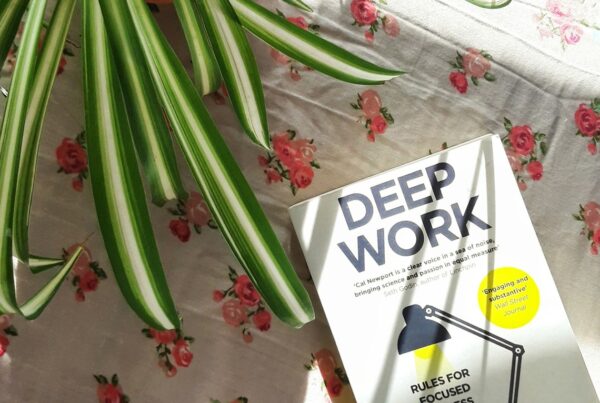Want more time to sit beneath trees, meditate, do yoga, and connect with people you love?
There’s an app for all that. Actually, there are a lot of apps for that. These apps automate the tedious to-dos of running an online business. They are cheap and ridiculously powerful. Best of all, they buy back time in our days.
The only problem? Determining which of the 905,768 apps (I made that # up) are legit… and which ones are black holes of time suckery?
In this article, I’ll share 7 apps that have risen to the top for me lately. Since we’re typically working with no less than 12 different clients at once, who all use their own “must-have” apps to power their digital businesses, we get to cross-pollinate our crème de la crème recommendations with each other.
The list of 7 apps below is nowhere near exhaustive, but it’ll get you started with some of the yummiest tools in my life right now.
Add Happiness & Flow to Your Day w/ These 7 Business Apps & Tools
Calendly
The Problem: Time suckage inbox hell
Omg. Wanna know what busy consultants and coaches spend WAY too much time doing?
Scheduling.
It’s inbox hell, too, because you’re just replying back to each other with various options on each other’s schedules. Nine emails later, you’ve finally found something that works for both of you.
But noowwww you have to go over to your online calendar and set up the event. And then you have to go get your conference line details and send them to your call invitee. Ultimately, you’ve wasted 30 minutes of your life setting up a 30 minute phone call.
The Solution: Automate scheduling with Calendly
When someone wants to discuss a new project with us, I simply email them a Calendly link to sign up for a complimentary discovery session. Here’s what they see when they click it:
At that point, my work is pretty much done. I can use the rest of my 29 minutes of saved time watching this beautiful short film about two Afghani boys, or calling my grandma and grandpa, or taking care of our clients, or shooting a Freedom LAB episode…
….or otherwise doing something productive while this is happening in the background:
- Calendly link recipient sees my available time slots (which are fetched dynamically from my Google Calendar) and selects the one that works for their schedule;
- Person fills in a few fields (that I’ve set up) that collect name, email, phone number, and “desired outcome for the call”;
- After filling that out, the person receives an automated invitation from my new Discovery Session with JAM Google Calendar event;
- Inside of the Google Calendar event description are the details for calling into my Uber conference line (an app I’ll discuss later);
- Event shows up on my Google Calendar, then sends both parties notification reminders — and those conference line details — 15 minutes prior to the call;
- If the person wants to cancel and/or reschedule the call, there are links to do that from within the Event details (I just had a person reschedule their own call with me today — no work on my end);
- We have an amazing call. Life is beautiful.
Calendly has added significant joie de vivre to my work. Because let’s be honest: we don’t get energized by staring at our inboxes, am I right?
Multiply 29 minutes of hellish inbox back-and-forth time saved x 2 discovery session peeps per day x 5 days per week = 290 minutes saved weekly. So with just one tool I’ve gained almost 5 hours per week of my life back. We can do a lot of hugging and loving in 5 hours.
Get It Here:
UberConference
The Problem: Teleconference PIN numbers
Most teleconference lines require you and/or your participants to dial in and then punch in a PIN code. For 99% of our conference calls here at Peaceful, we don’t need that extra PIN code step. Just a simple phone number to call in and participate will do and, in fact, it creates an easier experience for all involved.
For example, in that Calendly situation I described above, you saw that my Uberconference line is automatically added to the Google Calendar event description, yeah? Well, if you’re like me, when you get the notification from Google Calendar (either by email or push notification to your phone), you’re clicking from that notification to dial into the line. Nice and easy when it’s Uber.
But if you’re using a teleconference line that requires a PIN, then your peeps have to go back into that notification and write down the PIN or try to memorize it. I understand that you could pre-program the conference line’s PIN number into the dialing function on your phone, but most of our conference attendees are one-time callers, so it wouldn’t be useful for them to store/save our conference line.
The Solution: Go PINless, experience the freedom of naked conferences
Ok, I’ll admit: my issue with being forced to type/memorize/copy-paste a PIN to get into a conference line is kinda petty in the grand scheme of things. (Reminds me of people in Southern California complaining when it rains — three times per year.)
But here’s the deal: those little annoyances, inconveniences, and time wasters add up. They become the dust collecting in your subconscious.
Not only is Uberconference’s app (phone and desktop) a mental fluffer/duster, its UX is modern and intuitive. And you get all the bells and whistles you’d expect from the other well-known free conference line alternatives, such as:
- Recording / playback
- Multi-user screen sharing
- Dial in another person mid-call
- Caller controls (mute the person hacking up a lung)
- Caller profiles

Get It Here:
Zapier
The Problem: Too many great apps
While I’m no app market trend analyst, my professional career has been steeped in these tools. Over the last 4-5 years, I’ve seen a gigantic swing in app makers’ approach:
From “Swiss Army Knife” apps that tried to do everything reasonably well, like Infusionsoft, Ontraport, and Hubspot…

…to “Lean Startup” apps that do one or two things exceptionally well, like ActiveCampaign, MailChimp, and ConvertKit.
This new, latter approach starts with deciding “what will our app do better than any other app on the market,” declaring the MVP (minimum viable product), and becoming known as the go-to app for that industry-best feature.
https://www.instagram.com/p/BI-S4dihXYe/?taken-by=peacefulmedia&hl=en
There are multiple payoffs to this approach:
- 1000x better at its one job, because it’s a Zen master
- 100x easier to learn (this is the most important, imo)
- 10x cheaper
But what if you really do want your app to orchestrate multiple functions of your online business?
Resist the urge. Today’s apps are fundamentally, structurally designed to “bolt” on to apps that perform their individual functions well. It seems that the less an app tries to do, the more easily it integrates with others. Now that I really think about it, today’s apps would do really well in a 60s commune where each member brings a specialized skill and contributes it to the whole.
I could easily digress… but let’s get back to biz here. The challenge is getting all of these “players” in our online app commune to easily dialogue. Enter Zapier.
The Solution: there’s a Zap for that
Zapier is the connective tissue between these apps. It’s the messenger between our commune’s herbalist and lumberjack. “Heya, Lumber Jack, while foraging for lavender, Herb the Herbalist has just discovered a decaying cedar tree that would be perfect for starting our burning bowl fire tonight.”
Peaceful Media In-House Case Study:
- We send our project proposals and work orders in an app specifically designed to create proposals (Proposify).
- Prospective client approves the proposal by digitally signing the online document. When that happens, Proposify sends two “messages” to the digital universe via Zapier (we call them Zaps).
- Zap #1: send copy of signed proposal to a Dropbox folder called “Client Signed Agreements.”
- Zap #2: send an alert to our Project Management Slack channel, like this:

Those Zaps are automatic; our team just saved 10-15 minutes of processing and decreased our reliance on the devil…er, inbox.
Now multiply that by 50, because Zapier is automating our communication between Google Sheets, New Kajabi, Stripe, YouTube, Slack, Dropbox, Twilio, Drift, Facebook, Gravity Forms, Ontraport, and many more.
I love the time savings. I love the peace of mind that I get from knowing that a reliable robot is doing the robotic processes. In short, I love Zapier.
Get It Here:
Slack
The Problem: Communication among 25+ virtual team members
If you have an online business, it’s likely that you have team members scattered around the globe. At Peaceful, we’re predominantly a “work from anywhere” business. Tons of pluses to that, of course, but the most glaring challenge is intrateam communication. Things were getting lost in communication black holes.
The single biggest problem in communication is the illusion that it has taken place.
George Bernard Shaw
Our old solutions included email, Skype chat, Google chat / Hangouts — depending on the team member and his/her needs and communication style. There was no centralized, yet channel-specific hub for our online discussions.
The “channel-specific” piece is where the gold is. Google chat is centralized online chat, great for a 3-person team who are all talking about the same topics at the same time. But now multiply that team by 10 and you have a chat conversation that sprawls from “hey, I need a dev to spin up a new WordPress, who’s available?” to “have you seen those beautiful mood boards Rae designed for Jeff Walker?” to “have ya’ll seen that amazing Tony Robbins documentary?”
When you’re all physically in the same work environment, you share your ideas and requests with the appropriate person(s) and, if needed, huddle up with a subgroup who all find the specific topic relevant.
With Skype we had the ability to at least create groups. But it was clumsy at best. I’d look at my sidebar list of 30 different groups and try to figure out which one was the best channel for this project or that. And email is the devil, so I’m not even going to go into that one more than to say: it’s useful in small doses. Nobody — and I mean nobody — wishes they could get a few more emails every day.
The Solution: I’ll Slack it to you
We LOVE Slack. (Thank you to the Jeff Shore consulting team for turning this beautiful, FREE tool with us.)
Its unique selling proposition — “A messaging app for teams that ________” — is a good one, although it’s missing the proposition for which we are most grateful: less inbox. (If you’re good at reading between the lines, you’ve probably picked up on the fact that nobody here likes email.)

Slack communication is broken up into 3 hierarchies:
- Teams: some of our clients using Slack invite us to join their intra-team communication.
- Channels: threads within a Team to which you can add members; greatly increases information relevancy.
- Direct: one-to-one communcation within a Team.
Primary benefits:
- Tag certain team members. If you have something private to say to someone, you go to your Direct message area. But if you want to tag several people in the context of a Channel, Slack gives you that power with the “@teammembername” function. We tend to tag our project managers quite a bit so that actionable discussions will be turned into tasks in our project management system, Teamwork.
- Integrations. Thanks to Zapier, Slack acts as our “automated communication hub.” For instance, when I shoot a new episode of The Freedom LAB on YouTube, our “PM Marketing” Slack Channel gets a “zap” notification tagging @sandeep with a handy link to the video:

This Slack message is automatically triggered as soon as I upload a YouTube video. Now I don’t have to remember to tell Sandeep each time.
- Ultra-cheap. Did I mention Slack is free? Oh yeah. Hard to believe for such a mature application that provides so much value for a team like ours, but yes indeed it’s free. And don’t tell Slack, but we’d happily pay for what we’re getting in the free account.
- Emojis & GIF playback. This might sound weird, but emoji & GIF reactions matter to me. Text alone can only communicate so much. In the image above you see that our team member Sandeep reacted to the notification. That tells me a) he got it; b) he’s ready to rock it. Way more fun than “I’m on it.” And who doesn’t love a hairy chested Will Ferrell dance in the morning? When we integrated Drift into Slack for managing our website chat messages (discussed below), their bot zapped this GIF over to us:

Because c’mon, tell me that doesn’t give you a good feeling.
Even if your business isn’t virtual with team members scattered across the universe, I’d still say: Run, don’t walk, run to get a free download of Slack. Watch your inbox get cut in half on a daily business. Recover your happiness. Pay it forward.
HOW-TO BONUS: Check out this detailed guide to using Slack effectively, thanks to the folks at Time Doctor.
Get it here:
Drift
Problem: Engaging website visitors
When someone comes to your website, what do you want them to feel?
Awed? Inspired? Informed?
My answer? Connection. I want people to feel connected to our mission, our humanness, our personality.
People don’t buy products. They buy people, purpose, and promise.
Social media is built around this promise; it’s the communication tool. As a company, it’s our way of interacting in real-time with people who want to get to know us better or learn more about what we can do with them.
Whereas most company websites are more a tool for presentation than communication. Sure, you can drop a video on your page and show off more of your brand personality. But where’s the dialogue in that? Where’s the human engagement?
Solution: Elegant website chat, integrated with Slack
To increase connection with our site visitors, we recently added the Drift plugin for WordPress and signed up for a free account (limited # of monthly chats, but unlimited # of users).
Speedy Implementation & Adoption. I can’t say that we’re using it to its fullest potential, nor have we worked out the kinks of internal processes surrounding it (hence some rather spotty response rates), but I love what I’m seeing already. Almost immediately our site visitors started using it, asking us questions about various packages and offerings or just being friendly and saying “hi” (and then getting somewhat delighted when a real human being responded).
On the last slide in the GIF below, you’ll see that we’ve rigged the Drift conversation to open up a new, temporary channel in Slack to which anyone on our team can add themselves.

Drift > Slack integration: 4 Steps of Interaction
Creepy Benefit: If/when the visitor enters their email address in the conversation, Drift pings the Interwebs for information about the visitor (kinda creepy) and displays that information right there in Slack so that I can get to know the person and make assumptions about his/her favorite wine.
Friends With Benefits. There are plenty of other website chat/messaging solutions out there, but I’ve never seen one that integrates so easily with our existing tools (and many more):

From Drift.com
Clean, Modern UX. We bill ourselves as an innovative marketing agency, so it’s important to us that we look the part. The Drift icon (bottom right of the browser) and interface are customizable to an acceptable degree and the whole interaction feels more Web 3.0 than most site messaging apps.
Eventually we will get more strategic about the pages on which we insert the Drift messaging throughout our site, but for now I’m loving the additional venue for 2-way communication with our tribe!
Get it here:
Squarespace
The Problem: Creating professional websites is too costly for many small business owners
A good chunk of our website traffic comes from our clients’ websites. “I want a site like JeffWalker.com or Brendon.com or JoePolish.com,” is the typical request on our contact forms.
I believe wise online entrepreneurs patiently wait to add tools and functionality until return on investment is obvious.
Their sites are all built on WordPress’s self-hosted, open source software, which is perfect for multi-million dollar businesses that build awareness and audience primarily through content marketing (podcasts, YouTube episodes, articles, etc.)
But WordPress is not a perfect solution for a start up entrepreneur with a limited budget ($500 – $10k) and limited experience in online business development (and/or coding). To put it simply, for the beginner bootstrapper, WordPress is too much; too much to learn, manage, maintain, update, afford. We can bend it to do whatever you want… and sometimes that’s just not the best thing to do. Like we talked about in the Swiss Army Knife vs Lean Startup app trends, I believe wise online entrepreneurs patiently wait to add tools and functionality until return on investment is obvious.
Given that 95% of our Peaceful tribe members, subscribers, and contact form submitters do not have 6-figure businesses (yet), we needed to create a better solution than our typical $10k+ WordPress sites, a stepping stone for the <$250k/year crowd.
What I discovered blew me away…
The Solution: build your website in a day with Squarespace
Ok, so that promise — website in a day — is best applied to someone who knows how to design, write sexy copy,structure information for best user flow, and integrate a few apps (Google Sheets, MailChimp, Stripe, social media, and Google Apps for Business).
But it’s totally possible. I built ThoughtLeader.website in 10 hours, start to finish. (And then we created a whole course showing you how you can do it, too.)
8 Benefits of Squarespace (vs. WordPress)
- Drag & drop content management is out of the box, whereas with WP we need to add premium plugins
- Modern bells & whistles, like masthead video backgrounds
- Pre-built integration with MailChimp for newsletter and lead magnet subscriptions (no coding necessary)
- eCommerce right out of the box, so that you don’t have to buy separate shopping carts or deal with mobile un-optimized order forms
- Mobile optimization is almost automatic (still requires an eye for mobile design / user experience, but it’s certainly more straightforward than WP)
- Sexy landing pages for quickly building opt-ins for your lead magnets
- Blogging, podcasting, and embedding videos are all “drag and drop” easy
- Annual fee includes hosting & 24-7 customer chat support
While recording modules for Launch 31, our “launch your expert marketing website quickly” training program, I kept thinking about how difficult it would be to thoroughly teach the same program on WordPress. It’d be a 90-day course instead of 31.
People don’t have the time or patience to go down those rabbit holes and become savvy web technicians; they just want to look good, sound good, build a tribe, share their wisdom with the world.
I believe Squarespace is the fastest way to get there.
Get It Here:
[et_bloom_inline optin_id=optin_8]
Printful
The Problem: distributing branded swag w/o turning into a warehouse
No event is complete without some take-home swag and a “merch table” in the back of the room.
So when we were planning for Elevate Your Brand Implementation Week with Brendon Burchard, we thought: “heck, we have a really inspiring brand that would look good on a hoodie or t-shirt — let’s set up our own merch table!”
We hired a local print-on-demand apparel shops here in Portland and got a batch of hoodies printed up. They were a hit! During the week, a bunch of people purchased the hoodies and the gorgeous posters our creative director Rae put together. Several of them wrote to us saying that everywhere they went they got compliments on the hoodies and a “where’d you get that?” question.
Where there’s demand, there’s entrepreneurial juice to guzzle down. But then I started thinking about the implications of that business. Yuck. Who wants to manage inventory and shipping and handling. And yeah, we could hire someone to do that, but c’mon. I’m an optimist and all, but I wasn’t expecting 50 sales per day.
Furthermore, aren’t we in the age of automation? I think so. So I started researching: how can we offer our beautiful, quality goods without getting into the printing, shipping, and fulfillment business?
[shopify embed_type=”product” shop=”peaceful-media.myshopify.com” product_handle=”womens-t-shirt” show=”all”]The Solution: the no touch, print-on-demand swag creation and delivery machine
Today anyone can come to our Peaceful Goods Shop here on our WordPress and order a high-quality Mission phone case, throw pillow, tote bag, t-shirt, hoodie, mug, or even a baby onesie — and nobody here at the office has to touch a thing. The beautiful machine that is Printful handles it.
Printful is an app that plugs in to Shopify (which is a wonderful app in its own right, plugging e-commerce functionality into any website). After initial setup and integration, all we had to do was upload our artwork and select the “goods” to which we wanted it applied. Shopify integrates beautifully on our Facebook page, so our inspired message — Love More, Play More, Do More Good — can be ordered right from there without ever leaving FB.

Peaceful’s “Mission Hoodie” reads: Love More, Play More, Do More Good
Since launching our online shop with print-on-demand apparel, we’ve implemented the same shop > print-on-demand system for our good friends at RebeccaRosen.com and they’re already receiving a good chunk of orders every day. No sweat, it’s ready to scale!
Get It Here:
The Takeaway
As cool as these apps and tools are, spend time researching whether or not they truly make your life more efficient — or just add more things you need to learn and operate.
And, finally, please don’t make the mistake of falling into the “if he/she is using it > and he/she is really successful > then I’ll be more successful if I use it, too” fallacy. Think before you follow. The entrepreneurial world has plenty of sheep already. 😉
Now go, try out one or all of these 7 tools, and use that time saving to experience more of this…
Did We Miss Your Favorite Business Automation App? What’s Your Top 7 Right Now?
Please use the comments below to tell us the tools and apps that are making your world easier, cheaper, and more efficient!

















Thanks for the article holmes! Time to go hang w some pebbles for a bit.